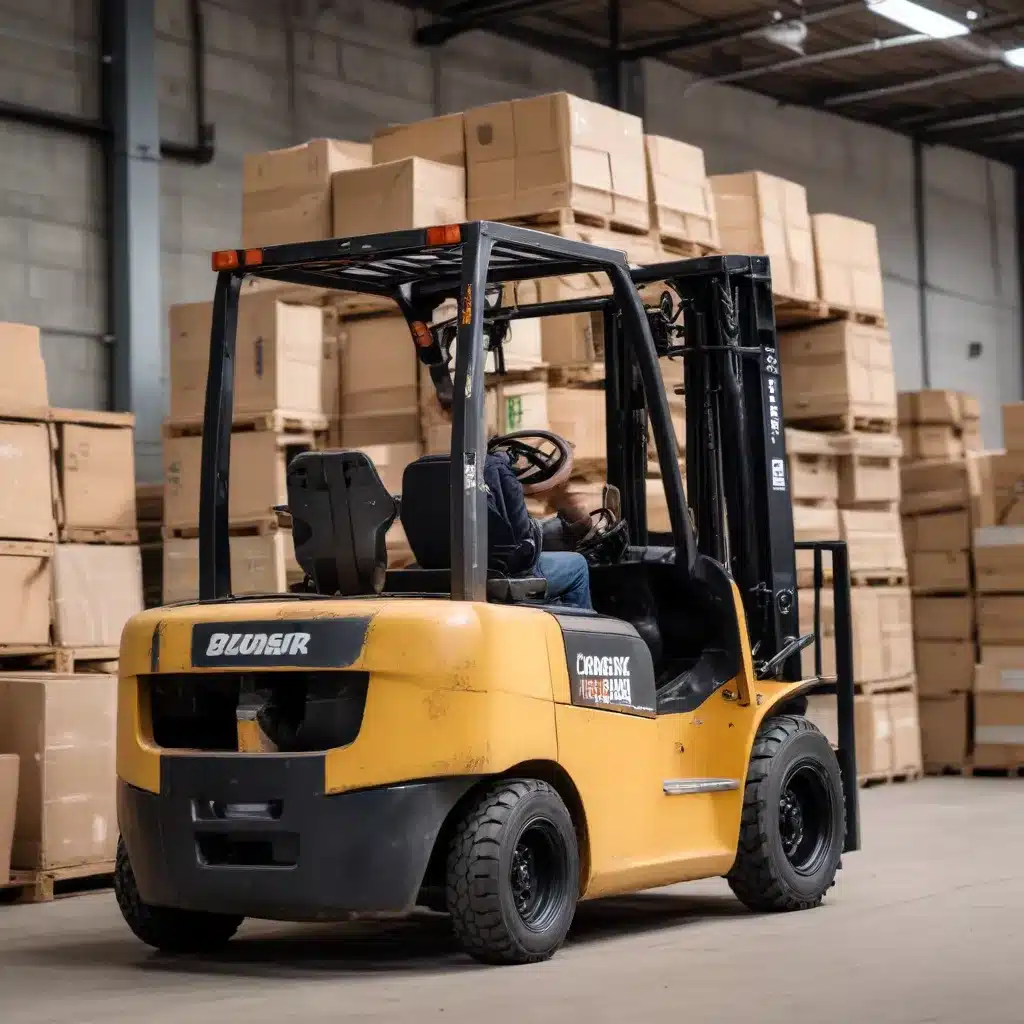
Understanding the Lease vs. Buy Equation
Deciding whether to lease or buy equipment for your business can have a significant impact on your cash flow and overall financial planning. As an industry expert in forklifts, warehousing, and logistics, I’ve seen firsthand how this choice can make or break a company’s budgeting strategy. In this comprehensive guide, we’ll explore the key considerations and practical insights to help you determine the best option for your forklift needs.
The Flexibility and Convenience of Leasing
One of the primary advantages of leasing forklifts or other warehouse equipment is the enhanced flexibility it provides. Leasing allows you to keep up with the latest technology and trends without tying up significant capital. Instead of making a large upfront investment, you can spread out the payments over the lease term, preserving your cash reserves for other business priorities.
Leasing also offers the convenience of simplicity. The lessor typically handles maintenance, repairs, and even replacements, so you don’t have to worry about the hassle of managing those operations. This can be especially beneficial for businesses that need to frequently upgrade their equipment to stay competitive or accommodate changing needs.
The Long-Term Ownership Benefits of Buying
On the other hand, purchasing forklifts or other warehouse equipment can provide long-term advantages that leasing may not. Owning the assets outright allows you to customize them to your specific requirements and make modifications as needed. This can be particularly valuable for businesses with unique operational demands or those that require highly specialized equipment.
Furthermore, the total cost of ownership over the asset’s lifetime may be lower when you buy compared to leasing. While the initial investment is higher, you avoid the ongoing lease payments and can potentially benefit from tax deductions, such as those available under IRS Section 179. Ultimately, the decision to lease or buy comes down to evaluating your business’s cash flow, budgeting needs, and long-term equipment requirements.
Evaluating the Factors in the Lease vs. Buy Decision
When determining whether to lease or buy forklifts and other warehouse equipment, consider the following key factors:
1. Flexibility and Obsolescence
Leasing offers greater flexibility in terms of upgrading or replacing equipment as your needs change. Forklifts and other warehouse tools can quickly become outdated, and leasing allows you to stay ahead of the curve without being saddled with aging assets. Conversely, buying provides more control over the equipment and the ability to modify it as required, but you may be stuck with the asset for its entire useful life.
2. Capital Requirements and Cash Flow
Leasing typically requires lower upfront costs compared to buying. This can be beneficial for businesses with limited capital or those that want to preserve cash for other investments. However, the long-term costs of leasing may be higher than outright ownership, depending on the terms of the agreement.
3. Tax Considerations
When you purchase equipment, you may be eligible for certain tax deductions, such as those offered under IRS Section 179. This can provide significant savings and potentially offset the higher initial investment. Leasing, on the other hand, generally does not offer the same tax benefits, as the lease payments are considered operating expenses.
4. Maintenance and Repairs
Leasing often includes maintenance and repair coverage, which can simplify your operations and reduce the burden on your in-house technicians. Conversely, when you own the equipment, you are responsible for all maintenance and repair costs, which can add up over time.
5. Residual Value and Resale
Leased equipment typically has no residual value at the end of the lease term, as it must be returned to the lessor. In contrast, when you own the equipment, you have the option to sell it at the end of its useful life, potentially recouping a portion of your initial investment.
The Impact of Lease Accounting Standards
The new lease accounting standards, such as ASC 842 and IFRS 16, have further complicated the lease vs. buy decision-making process. These standards require companies to recognize most leases on their balance sheets, which can have a significant impact on financial reporting and ratios.
Under the new standards, the distinction between operating and capital (finance) leases has become less relevant. Instead, the focus is on the overall cost-benefit analysis of the lease arrangement. Companies must carefully evaluate the financial implications of each option, considering the impact on their balance sheet, income statement, and cash flow.
Finquery’s lease vs. buy calculator can be a valuable tool in navigating this decision. By inputting the relevant details, such as the asset’s purchase price, lease terms, and financial metrics, you can compare the potential outcomes and make a more informed choice.
Putting it All Together: Forklift Leasing vs. Buying
When it comes to your forklift and warehouse equipment needs, there’s no one-size-fits-all solution. The decision to lease or buy should be based on a thorough analysis of your specific business requirements, financial situation, and long-term goals.
If your business operates in a rapidly changing environment and requires frequent equipment upgrades, leasing may be the more flexible and cost-effective option. This can help you keep up with the latest technology and industry trends without draining your cash reserves.
On the other hand, if you have a stable operation and can benefit from the tax advantages and potential resale value of owning the assets, purchasing the forklifts or other equipment may be the better long-term investment. This approach also gives you more control over customization and maintenance.
Ultimately, the choice between leasing and buying forklift equipment comes down to balancing your immediate cash flow needs, long-term financial goals, and operational requirements. By carefully evaluating the factors and using the available tools, you can make a strategic decision that aligns with the Forklift Reviews blog’s mission of providing practical insights and industry-leading advice.

